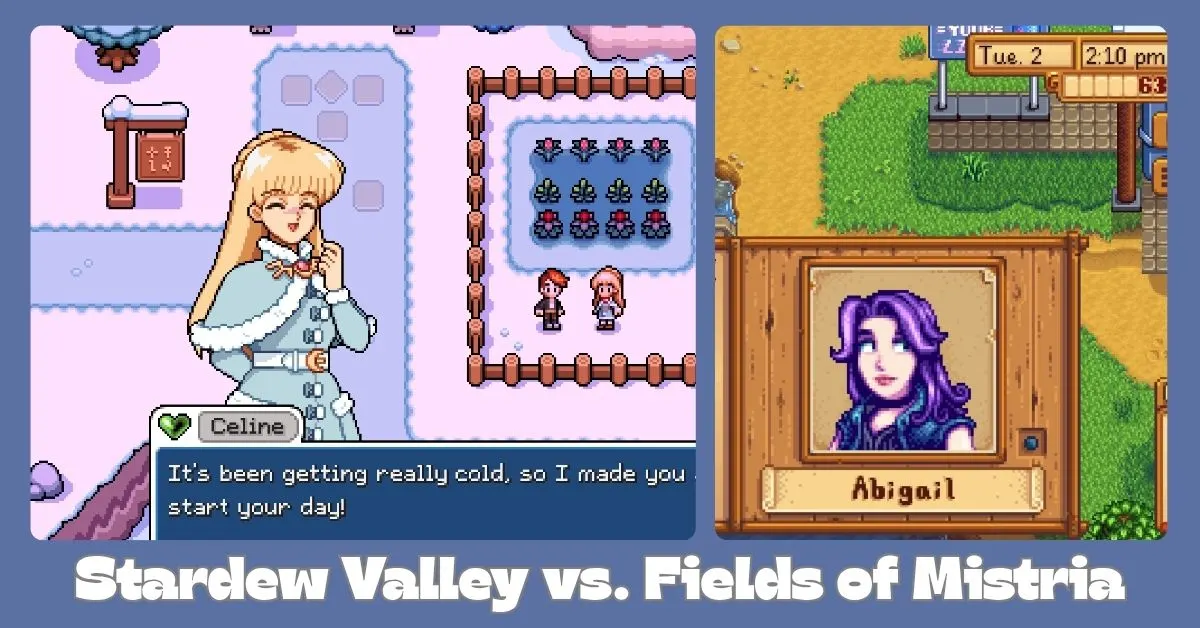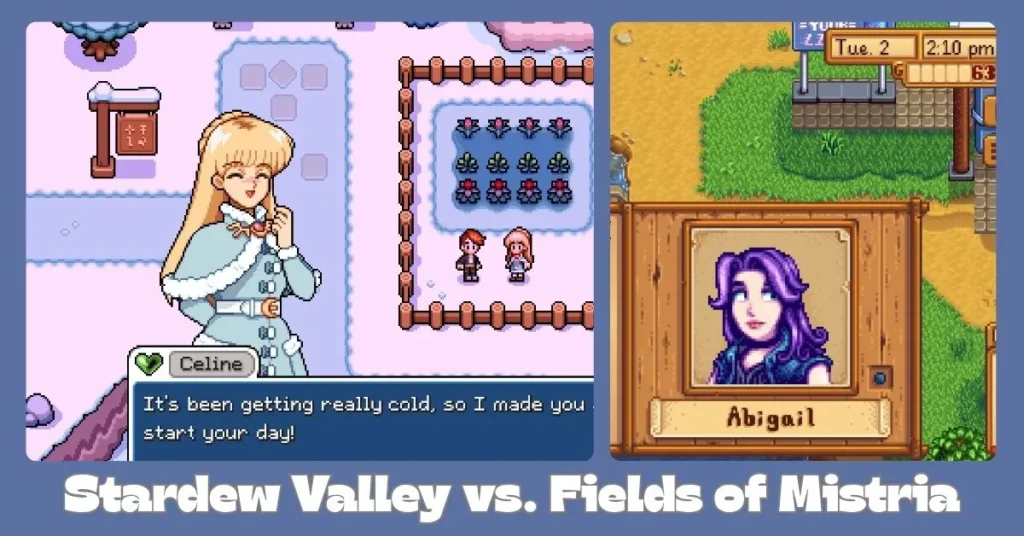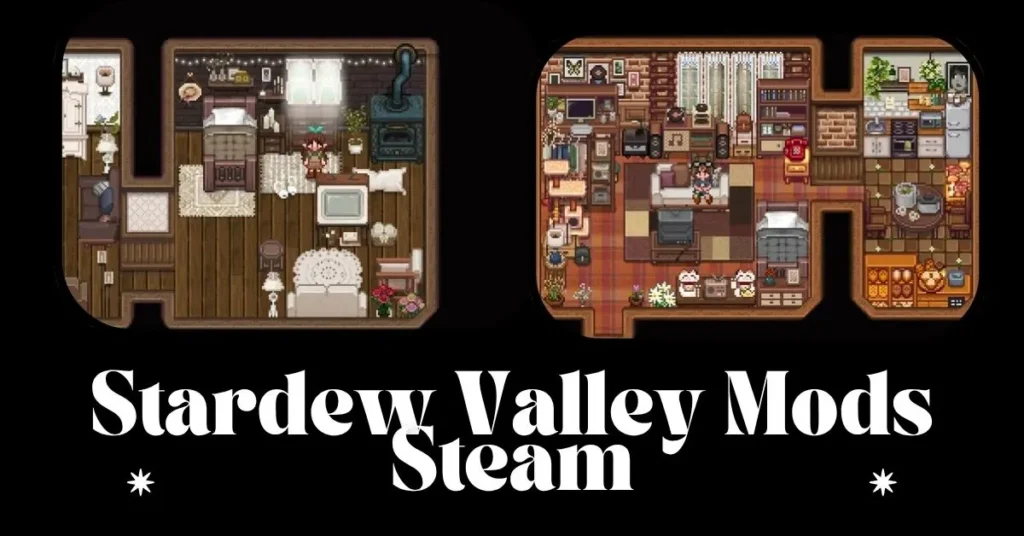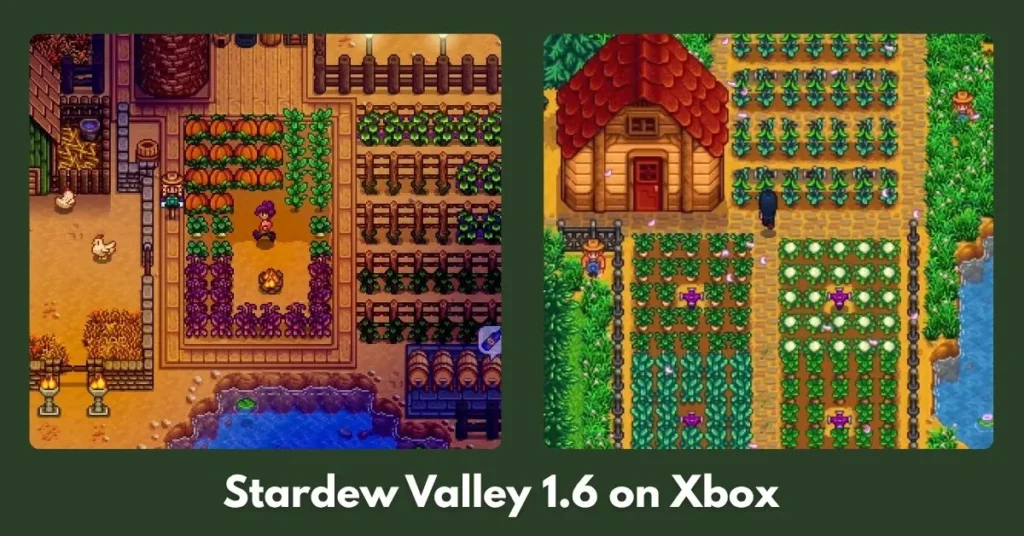Stardew Valley holds a special place in the hearts of millions, having redefined the farming sim genre with its charming pixel art, deep mechanics, and endearing characters. However, even the best games can find inspiration from new contenders. Fields of Mistria, a rising star in Early Access with overwhelmingly positive Steam reviews, offers some truly innovative features that Stardew Valley modders and players alike could look to for fresh ideas and enhancements.
Fields of Mistria’s approach to world-building, social dynamics, and gameplay presents a wealth of potential for a community as creative and dedicated as stardewvalleymods.org.

Cultivating a More Dynamic Pelican Town: Lessons from Mistria
The core appeal of both games lies in building a farm and integrating into a vibrant community. While Stardew Valley excels at this, Fields of Mistria introduces elements that make its world feel even more alive and reactive.
1. A Unique Visual Identity: Beyond the Familiar Pixels
While Stardew Valley‘s pixel art is iconic, Fields of Mistria carves its niche with a distinct 90s anime-inspired aesthetic, characterized by a softer, pastel-colored palette and highly expressive character designs. This visual style contributes significantly to its unique charm, proving that even within pixel art, there’s room for diverse artistic interpretation.
Modding Inspiration for Stardew Valley:
- Complete Visual Overhauls: Imagine a mod that re-textures all environments, buildings, and objects in Pelican Town to a softer, more pastel-driven aesthetic, mimicking Mistria‘s serene atmosphere.
- Anime-Inspired Character Redesigns: Modders could create character portrait and sprite replacements that infuse a stronger 90s anime flair, offering a fresh look for beloved NPCs. This could include more dynamic expressions or even seasonal outfit changes with a distinct art style.
- Themed Furniture and Decor Packs: New furniture sets, wallpaper, and flooring could be designed to match Mistria‘s specific interior decor style, allowing players to transform their farmhouses and sheds.
2. Deepening Community Bonds: Beyond Standard Dialogue
One of Fields of Mistria‘s most lauded features is its emphasis on community interaction. Beyond individual conversations, NPCs regularly gather at the town inn on specific days, engaging in group activities like playing Dungeons & Dragons. This organic interaction makes the town feel more interconnected and lived-in, allowing players to observe relationships unfold naturally rather than solely through scripted events.
The game also features a high volume of unique dialogue (over 5,000 lines even in early access) and characters who react to things you’ve donated or events they’ve been part of.
Modding Inspiration for Stardew Valley:
- Dynamic Social Hubs: Create a mod that designates a recurring “social night” at the Stardrop Saloon or a new community building. NPCs could gather there, engage in group conversations, play card games, or even perform small skits. Players could simply observe or join in, leading to more emergent storytelling.
- Enhanced NPC Schedules and Interactions: Develop more complex NPC schedules that allow for more frequent and varied group interactions, perhaps seeing different trios or quartets of villagers hanging out and chatting.
- Reactive Dialogue System: While challenging, modders could explore expanding Stardew Valley‘s dialogue system to include more reactive lines from NPCs, acknowledging player achievements (e.g., “I heard you just completed the Community Center!”), gifts given to others, or even current in-game events.
- Mini-Games with NPCs: Integrate new mini-games that involve multiple villagers, such as board games, storytelling circles, or simple group activities that build rapport in a more engaging way than just giving gifts.
3. Streamlined Mechanics and Unique RPG Elements
Fields of Mistria also streamlines certain farming sim tropes while introducing fresh ideas:
- Simplified Fishing: It forgoes the fishing mini-game, allowing players to simply “dive” for treasure, making it a more relaxed activity.
- Detailed RPG Skill Tree: Players have a robust skill tree for farming and other abilities, providing clear progression and unique perks.
- Magic System: Players can unlock magic spells to aid in farming (e.g., instantly grow crops, summon rain) or adventuring, adding a new layer of convenience and fantasy.
- Quality of Life Improvements: The game includes features like shops staying open longer, villagers appearing on the map, and quests not expiring, which reduce common player frustrations.
Modding Inspiration for Stardew Valley:
- Alternative Fishing Mechanics: Offer mods that either simplify the fishing mini-game or replace it entirely with a more exploration-focused “diving” system for specific aquatic treasures.
- Expanded Skill Trees: Introduce new, more branching skill trees for existing skills (Farming, Foraging, Mining, Fishing, Combat) or even entirely new skills (e.g., “Community Building,” “Magic Crafting”). Each branch could offer unique perks that significantly change gameplay.
- Magic Integration: Develop mods that introduce a basic magic system to Stardew Valley, allowing players to learn spells for farming efficiency (e.g., instant growth, area watering spells) or even simple combat enhancements, perhaps tied to a new “Magic” skill.
- Smart Map Overhauls: Enhance the in-game map to show real-time NPC locations, making it easier to track down villagers.
- Non-Expiring Quest Board: Implement a mod that prevents “help wanted” quests from expiring, allowing players to complete them at their leisure without time pressure.
4. Rebuilding the Town: Collaborative Quests
The game features dedicated quests to revitalize the town, often requiring communal effort or specific contributions from the player. This gives a stronger sense of purpose to the player’s presence and impact on the overall village.
Modding Inspiration for Stardew Valley:
- Expanded Community Center/Joja Mart Paths: Create entirely new questlines for town revitalization that go beyond the existing ones, perhaps focusing on different areas of Pelican Town or even expanding into new locales. These could involve collecting specific resources, completing tasks with NPCs, or funding new town projects.
- Dynamic Town Events: Introduce new events that are triggered by the completion of town revitalization quests, such as new shops opening, new NPCs moving in, or existing buildings receiving visual upgrades.
- NPC Contribution Mechanics: Design quests where NPCs visibly contribute to town projects alongside the player, making the rebuilding effort feel like a collaborative endeavor rather than a solo grind.
“While ConcernedApe continues to refine the game, discover our top Quality of Life mods for Stardew Valley that enhance daily farm life.”
Conclusion:
Fields of Mistria demonstrates that the farming sim genre still has vast potential for innovation and refinement. For the thriving Stardew Valley modding community, these features aren’t just selling points for a new game; they’re blueprints for enhancing and expanding the beloved world of Pelican Town.
By drawing inspiration from Mistria‘s unique art style, deeper community interactions, streamlined mechanics, and meaningful town progression, modders can continue to push the boundaries of what’s possible in Stardew Valley, ensuring its longevity and endless replayability.
The future of farming sims is bright, and with the creativity of its modding community, Stardew Valley can continue to evolve and surprise us all.



